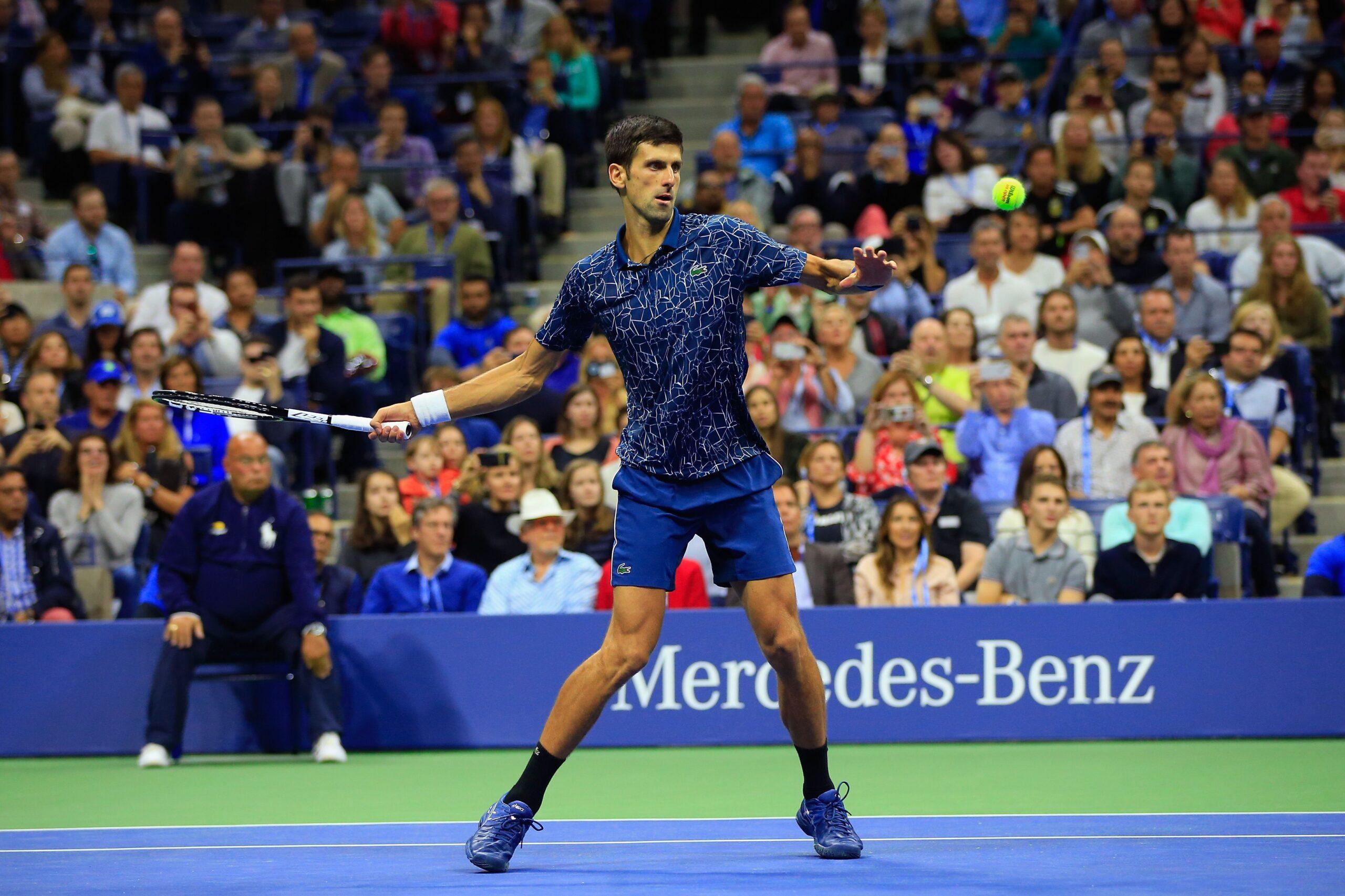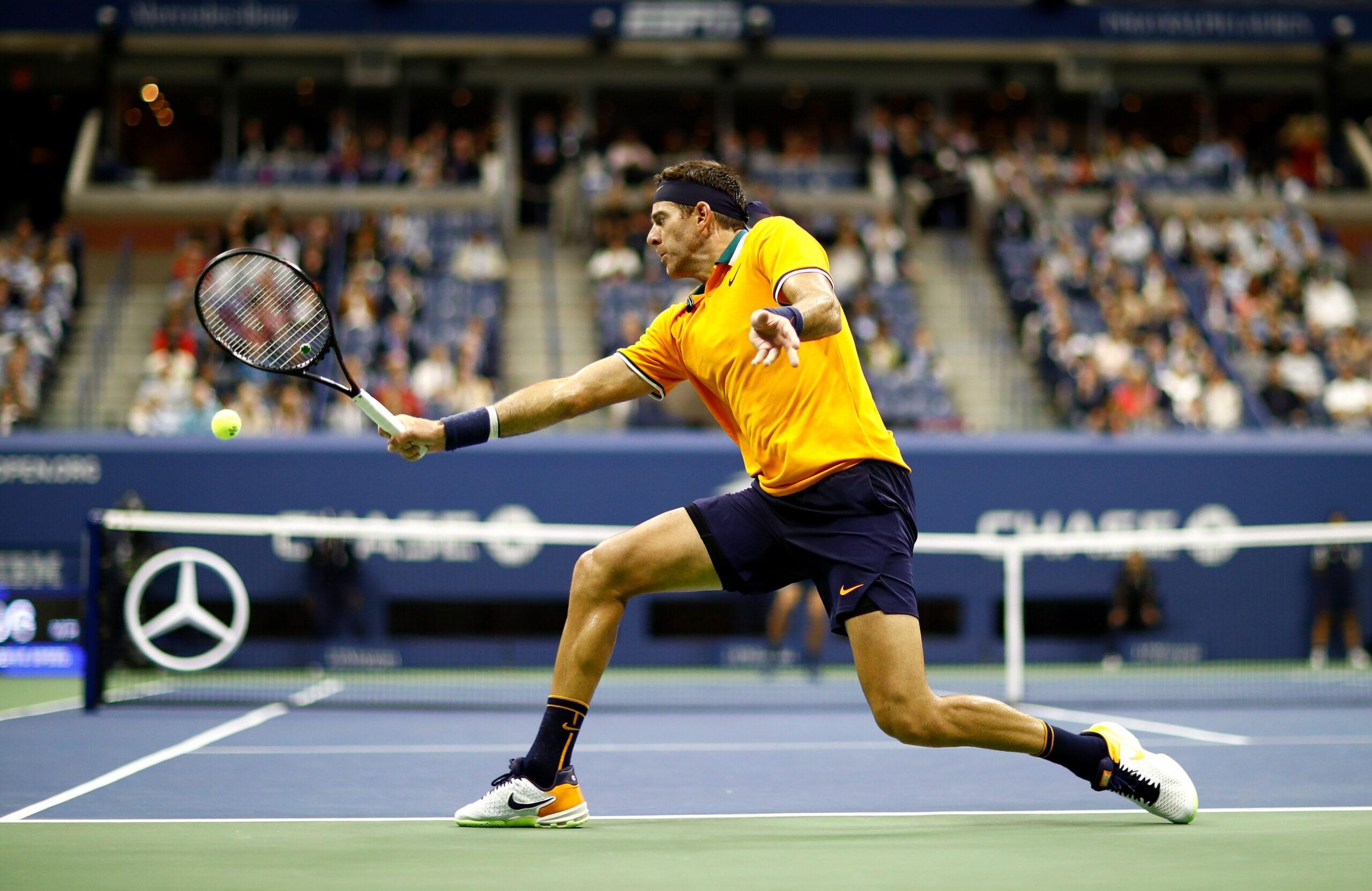When Novak Djokovic plays his best tennis, he makes the sport look simpler than anything in the world. His movement, spurred by seemingly precognitive senses, looks effortless and endless. His strokes, efficient and precise, appear preordained. He is an immovable object with no irresistible force. And for the past two weeks in Queens, Djokovic was in vintage form, winning his second major of the year and the 14th of his career while surrendering just two sets along the way.
After spending a season and a half looking diminished, like he’d lost just enough of a step to drop from invincible to irrelevant, Djokovic has found what he’d been missing. The Serbian is again at his calculating best. And it seems the tour will need every bit of it. Rafael Nadal and Roger Federer, who had returned from an off period prior to 2017 to shoulder the circuit for the past 20 months, showed their ages at this U.S. Open.
Nadal, known for being inexhaustible, was forced to retire in the semifinals with knee troubles after playing marathon matches in the quarterfinals and third round. It was his second retirement at a major this year. Federer, meanwhile, simply looked … old. In his fourth-round match against the diminutive John Millman, the 37-year-old’s frame-perfect game glitched and seized. He shanked forehands. He made poor and hasty movement decisions. Federer is never hard to watch, but that version of Federer had to be viewed through one squinted eye.
It is lucky to have Djokovic looking like himself again. And it was a relief that on the final Sunday, in the absence of a newcomer, he faced a worthy opponent. Since the beginning of 2017, challengers to the Big Three at fast-court slams have been older, one-dimensional big servers. Kevin Anderson, a finalist at last year’s U.S. Open and Djokovic’s opponent in the final of this year’s Wimbledon, is not a player who thrives in the open court. He clocks his big serve and hopes for the best. The results have not been great. In that sense, it’s good to have Juan Martín del Potro back, too.

Tennis players are revered and obsessed over, but only a select few are loved. Del Potro is adored. He possesses the perfect combination of power and cuddleability, securing a reputation as the most approachably appreciated player in the world.
The 6-foot-6 Argentine’s forehand is the most devastating weapon in tennis, a flat, shotgun blast of a stroke that is so capable of ending points that opponents will assume extra risk to avoid the possibility of facing it. His serve is a lightning strike, an injection of pure pace. His voice, on the other hand, is deep and lumbering; it was described by the writer Reeves Wiedeman as sounding “like it could belong to an anthropomorphic cloud on an animated children’s TV show.” Del Potro is gracious with opponents, fans, and interviewers alike. Once, as he prepared to serve, an unthreatened butterfly landed on his hand. He shooed it away by giving it a kiss.
Del Potro is a crowd favorite in arenas across the world. His fans, who sing and chant his name between every point, have a habit of turning stodgy tennis arenas into something resembling soccer stadiums. Watching him play is a treat; in an era defined by more patient, defensive tennis, del Potro is always on the attack. He has said that he hates running. Djokovic wants to exhaust opponents; Del Potro wants to hit them off the court, or whatever version of that is possible without hurting their feelings.
The last time that del Potro played in the U.S. Open final, in 2009, he looked like the future. The 20-year-old took on Federer, then fresh off a Roland Garros–Wimbledon double and aiming to win his sixth straight title in New York, and outhit him in an up-and-down five-setter.
“Federer was rattled,” Simon Cambers wrote for The Guardian of del Potro’s win. “The power of del Potro’s groundstrokes was forcing him deeper and deeper and at times the man many feel to be the greatest ever to play the game was reduced to hacking the ball back into play.”
Del Potro looked like a new, divergent branch of the tour, different from Djokovic and Andy Murray, the young grinders who were also on the rise at the time. He hated to run, but he could run. He could rally if required. A tall, powerful player with a sensational forehand who could move would have no trouble carving out a place for himself—or so it seemed. But then he got hurt. A series of wrist injuries and surgeries left del Potro unable to play. He was reduced to swinging a racket without strings to aid in his recovery. By early 2016, his ranking had dropped out of the top thousand.
Then he made a run to the finals in the singles draw at the Rio Olympics. He led Argentina to a Davis Cup victory in 2016. In 2017, he made a run to the semifinals at the Open, and earlier this year he took down Federer in the finals at Indian Wells. Later, he made the semifinals at Roland Garros. After his wrist troubles had made him hesitant to do anything but slice his backhand for years, he relearned how to flatten out the shot. His ranking reached a career-high no. 3 before the Open. The most well-loved man in tennis is ready to compete again.

Sunday’s final was more exciting than the scoreline would suggest. Djokovic’s 6-3, 7-6, 6-3 win took just over three hours, with the second set lasting 95 minutes and including a 20-minute game in which del Potro threatened, but failed to break Djokovic’s serve and all but even the match. The Argentine ran down balls and managed to hold his ground, even as Djokovic forced him into uncomfortable long rallies. But at the end of those long points, del Potro looked exhausted. After losing a tight tiebreak, he didn’t have the legs to keep up with Djokovic for three more sets.
Even if the match was not the tightest competition throughout, it was an exciting clash of styles, and confirmation that two of the game’s once-best players are prepared again to widen the field. That’s good. Its widening is long overdue.
Neither Djokovic, who is 31, nor del Potro, who is 29, will headline the next generation of men’s tennis—those declarations came 10 years ago. Still, they are capable of infusing life into a tour that is constantly searching for up-and-comers who can win the sport’s biggest prizes. Until somebody young puts it all together, yesterday’s future can stand in for today’s.